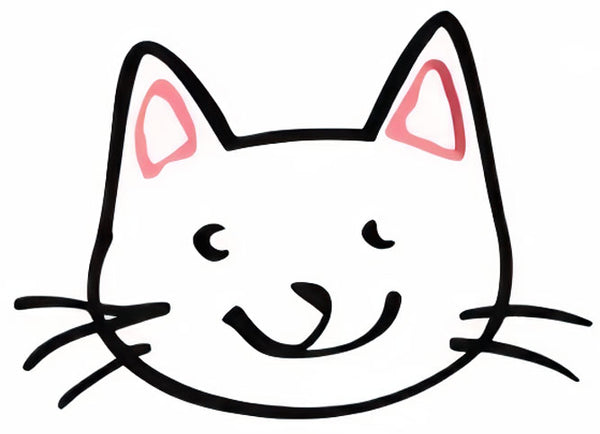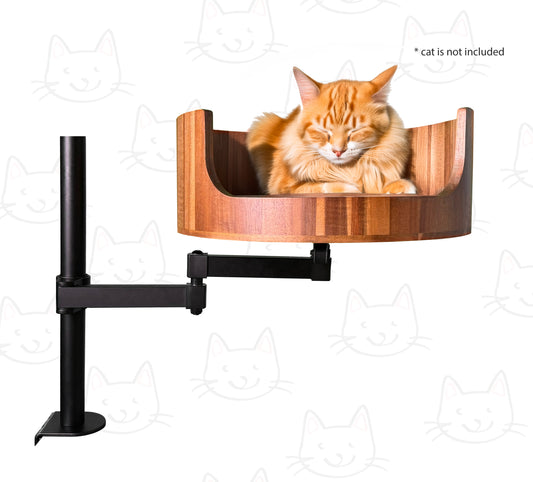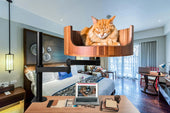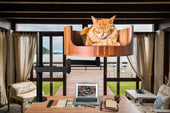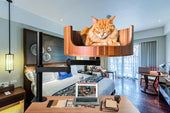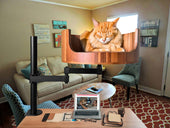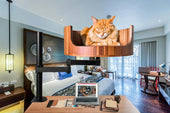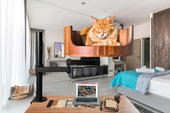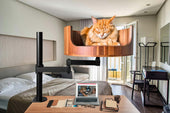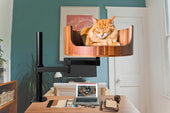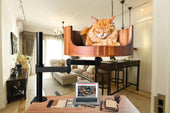
Cats Chasing Tail: A Playful Feline Fascination
Share
Cats have long been known for their playful antics, from pouncing on imaginary prey to chasing after laser pointers. One particularly adorable behavior that many cat owners have likely witnessed is the act of cats chasing their own tails. This playful feline fascination has captivated pet owners for generations, leading to endless amusement and entertainment.
In this article, we will explore the reasons behind why cats chase their tails, from instinctual behaviors to simple boredom. We will delve into the history of this behavior and how it has evolved over time, as well as the potential benefits and drawbacks of allowing your cat to indulge in this activity. Additionally, we will provide tips and tricks for cat owners who may be concerned about their pet's tail-chasing habits, offering insight into how to encourage healthy play and prevent any potential injuries. Join us as we unravel the mysteries behind cats chasing their tails and gain a deeper understanding of this delightful and whimsical behavior.
1. Cats often chase their tails as a playful behavior, not just to catch an imaginary prey.
2. Tail chasing can be a form of exercise and mental stimulation for cats, especially those kept indoors.
3. Some cats may chase their tails due to boredom, anxiety, or to seek attention from their owners.
4. It is important for cat owners to provide their pets with interactive toys and activities to prevent excessive tail chasing.
5. Understanding the reasons behind tail chasing can help owners better care for their feline companions and ensure their overall well-being.
Why Do Cats Chase Their Tails?
Cats chasing their tails may seem like a cute and playful behavior, but it actually serves a purpose. One reason why cats chase their tails is because they are practicing their hunting skills. In the wild, cats have to be agile and quick to catch their prey, so chasing their tails mimics this hunting instinct. Another reason could be that cats are simply bored and looking for entertainment. Tail-chasing also provides exercise for cats and helps them expend excess energy. Some cats may chase their tails due to anxiety or stress, so it's important to pay attention to the context in which this behavior occurs.
When Is Tail Chasing a Concern?
While tail chasing is generally harmless behavior, there are instances where it may be a cause for concern. If a cat is constantly obsessively chasing their tail to the point where it interferes with their daily activities or causes injury, it could be a sign of a compulsive behavior problem. In some cases, tail chasing may also indicate an underlying medical issue such as flea infestation, skin irritation, or neurological problems. It's important to monitor your cat's tail-chasing behavior and consult with a veterinarian if you notice any worrisome signs.
How to Manage Tail Chasing Behavior
If you notice that your cat is chasing their tail excessively or in a harmful manner, there are several steps you can take to manage this behavior. Providing your cat with plenty of mental and physical stimulation through interactive toys, puzzles, and play sessions can help redirect their energy away from tail chasing. Creating a calm and stress-free environment for your cat can also reduce the likelihood of compulsive behaviors. In some cases, behavior modification techniques or medication prescribed by a veterinarian may be necessary to address underlying issues contributing to tail chasing. Overall, it's important to be patient and understanding when addressing your cat's tail-chasing behavior.
Frequently Asked Questions
Can a Desk Cat Nest help prevent my cat from chasing its tail?
Desk Cat Nest can provide a cozy and secure space for your cat to rest and relax, which can help reduce stress and anxiety. By offering a designated space for your cat to unwind, it may be less likely to engage in tail-chasing behavior.
How does a Desk Cat Nest differ from other cat beds?
Desk Cat Nest is specifically designed to be placed on your desk, providing your cat with a elevated and secure spot to observe its surroundings. This can be particularly helpful for cats who may be prone to tail-chasing as it gives them a sense of control and security.
Is a Desk Cat Nest suitable for all cats?
While Desk Cat Nest can be a great option for many cats, it may not be the best solution for every feline. It's important to consider your cat's individual preferences and behavior patterns to determine if a Desk Cat Nest is the right fit for them.
How can I train my cat to use a Desk Cat Nest?
Introducing your cat to a Desk Cat Nest can be done gradually by placing treats or toys inside to encourage exploration. Encouraging positive associations with the nest through praise and rewards can help your cat feel more comfortable using it.
In conclusion, the Desk Cat Bed is a valuable choice for cats who are constantly chasing their tails. By providing a cozy and comfortable space for your feline friend to relax and unwind, this bed can help redirect their attention away from destructive behaviors like tail-chasing. Additionally, the raised design of the Desk Cat Bed provides a sense of security and allows cats to observe their surroundings, reducing anxiety and stress. Overall, investing in a Desk Cat Bed can lead to a happier and healthier cat, making it a beneficial addition to any pet owner's home.
